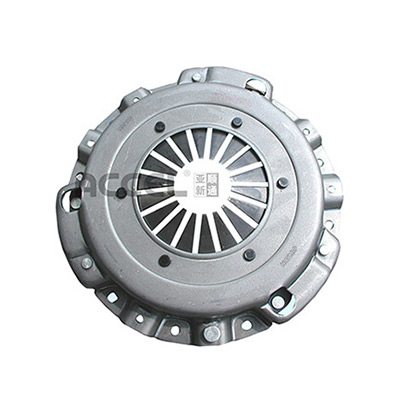- Arabic
- French
- Russian
- Spanish
- Portuguese
- Turkish
- Armenian
- English
- Albanian
- Amharic
- Azerbaijani
- Basque
- Belarusian
- Bengali
- Bosnian
- Bulgarian
- Catalan
- Cebuano
- Corsican
- Croatian
- Czech
- Danish
- Dutch
- Afrikaans
- Esperanto
- Estonian
- Finnish
- Frisian
- Galician
- Georgian
- German
- Greek
- Gujarati
- Haitian Creole
- hausa
- hawaiian
- Hebrew
- Hindi
- Miao
- Hungarian
- Icelandic
- igbo
- Indonesian
- irish
- Italian
- Japanese
- Javanese
- Kannada
- kazakh
- Khmer
- Rwandese
- Korean
- Kurdish
- Kyrgyz
- Lao
- Latin
- Latvian
- Lithuanian
- Luxembourgish
- Macedonian
- Malgashi
- Malay
- Malayalam
- Maltese
- Maori
- Marathi
- Mongolian
- Myanmar
- Nepali
- Norwegian
- Norwegian
- Occitan
- Pashto
- Persian
- Polish
- Punjabi
- Romanian
- Samoan
- Scottish Gaelic
- Serbian
- Sesotho
- Shona
- Sindhi
- Sinhala
- Slovak
- Slovenian
- Somali
- Sundanese
- Swahili
- Swedish
- Tagalog
- Tajik
- Tamil
- Tatar
- Telugu
- Thai
- Turkmen
- Ukrainian
- Urdu
- Uighur
- Uzbek
- Vietnamese
- Welsh
- Bantu
- Yiddish
- Yoruba
- Zulu
დეკ . 16, 2024 09:12 Back to list
small timing belt
Understanding Small Timing Belts Importance, Function, and Maintenance
In the world of automotive engineering, timing belts play a crucial role in ensuring that engines operate smoothly and efficiently. Among these, small timing belts are fundamental components, particularly in compact vehicles and certain machinery. This article delves into the importance, functions, and maintenance of small timing belts, outlining why they should never be overlooked.
What is a Small Timing Belt?
A timing belt is a reinforced rubber belt that connects the crankshaft to the camshaft in an internal combustion engine. Its primary job is to synchronize the rotation of these shafts, ensuring that the engine's valves open and close at the correct times in relation to the position of the pistons. Small timing belts are typically found in smaller engines, such as those in compact cars, motorcycles, and various types of machinery.
These belts are engineered to withstand significant tension and wear, as they operate within a high-stress environment. Their construction usually involves durable materials like neoprene or polyurethane, potentially reinforced with fiberglass or steel for added strength.
The Importance of Small Timing Belts
The small timing belt is often an unsung hero of engine performance. While many components of a vehicle might be flashy or more visible, like exhaust systems or wheels, small timing belts are essential for the coherence and efficiency of vehicle operation. When functioning properly, they ensure that the engine runs smoothly, which can lead to better fuel efficiency, reduced emissions, and enhanced performance.
A well-maintained timing belt contributes to overall engine longevity. On the other hand, a worn or broken timing belt can lead to catastrophic engine failure, resulting in costly repairs. Therefore, understanding the importance of these components is vital for vehicle owners and operators.
Function of Small Timing Belts
small timing belt

The primary function of a small timing belt is to maintain the correct timing between the crankshaft and camshaft. When the crankshaft rotates, it drives the timing belt, which, in turn, rotates the camshaft. This synchronization is crucial if the camshaft is out of sync with the crankshaft, the engine's valves may open and close at inappropriate times, leading to potential engine damage, loss of power, or stalling.
In addition to its timing function, the small timing belt also helps in driving auxiliary components such as the water pump, oil pump, or even the alternator, depending on the engine design. This versatility underscores the importance of maintaining the timing belt, as failure of the belt could impact more than just the engine's timing.
Maintenance of Small Timing Belts
Proper maintenance of small timing belts is critical to ensuring the longevity and efficiency of an engine. It is generally recommended to replace timing belts every 60,000 to 100,000 miles, depending on the manufacturer’s specifications. Regular inspection is also necessary; any signs of wear, such as cracks, fraying, or glazing, should prompt immediate replacement.
In addition to periodic checks, it is essential to ensure that the timing belt is properly tensioned. A belt that is too loose may slip, while one that is too tight can cause premature wear. Many manufacturers provide guidelines for the correct tension to be applied.
Given the potential consequences of a timing belt failure, it is wise to have a trusted mechanic inspect the timing belt during regular service intervals. Neglecting this component can lead to devastating engine damage, significantly increasing repair costs and vehicle downtime.
Conclusion
In conclusion, small timing belts may not be the most glamorous component of a vehicle, but their importance cannot be overstated. Their role in synchronizing engine components ensures that vehicles run smoothly and efficiently. Proper maintenance and timely replacement are critical for vehicle health. By understanding and respecting the function of small timing belts, vehicle owners can help ensure their engines remain in peak condition, ultimately prolonging their operational life and enhancing performance.
-
Korean Auto Parts Timing Belt 24312-37500 For Hyundai/Kia
NewsMar.07,2025
-
7PK2300 90916-T2024 RIBBED BELT POLY V BELT PK BELT
NewsMar.07,2025
-
Chinese Auto Belt Factory 310-2M-22 For BMW/Mercedes-Benz
NewsMar.07,2025
-
Chinese Auto Belt Factory 310-2M-22 For BMW/Mercedes-Benz
NewsMar.07,2025
-
90916-02660 PK Belt 6PK1680 For Toyota
NewsMar.07,2025
-
drive belt serpentine belt
NewsMar.07,2025

